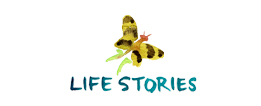My 2yo, Baby Girl, likes books. And, she’s finally begun to like them for their value beyond paper needing to be torn and/or eaten. I can’t tell you how many pages and covers I’ve taped back together during the continuing saga of our love affair with books. I (and the boys) are thankful Baby Girl has moved into wanting to read the books now.
For a while, reading constituted simply turning the pages to follow her whims. Forward, backward, starting at the beginning or the end or the middle–it didn’t really matter. We were “reading.” By herself or with a captive audience, she mastered the mechanics of flipping through books. From there, she moved into the point-and-question phase with a perpetual “that?” attached to each touch of her sweet finger. Of late, her version of “read book” has finally reached some semblance of actual reading. She wants to listen to the words on the page, usually (though not always) in chronological order. Don’t get me wrong, listening to the words still evokes commentary. Her ever-present curiosity combined with pride at learning to speak new words prompts many questions and declarations relevant to the illustrations on the page.
Boots. Boots. BOOTS.
You may not recognize that phrase from any of the children’s books you have read recently. In keeping with her brothers and about a million other youngsters over the last fifty years, Baby Girl loves Good Night Moon, the classic by Margaret Wise Brown. No, there aren’t any boots mentioned among the “bears sitting in chairs” and the “old lady whispering hush.” Still, the other night her emphatic “Boots. Boots. BOOTS.” became more than parenthetical during bedtime. I tried to move on through the “good nights.” I tried to turn pages and continue with the “mittens” and “kittens.” To no avail. Baby Girl was insistent on “boots,” and as each utterance grew louder, I realized that we weren’t moving on until we addressed footwear.
The “boots” were actually bedroom slippers beside the bed of the sleeping bunny. Only now they ARE boots because Baby Girl won’t be swayed from her assessment. And by her insistence, she gave me a reminder about being heard and brought to light some things I hope for her future.
You see, Baby Girl has a way of repeating her tiny phrases until they’re acknowledged. And, she’s not afraid to get loud about it. Her brothers did too at her age, but somehow hers seems more definitive, more insistent. And, although interrupting is a no-no and a gentle, quiet spirit is admirable, I don’t want to break that in her. I don’t want to shush it out of her. I don’t want to squelch her own understanding that what she has to say is important. No, I want her to learn some things about her voice, things born from my own pitfalls. I want to tell her this…
Keep. On. Speaking.
Keep on repeating.
It’s ok to want to be heard.
Believe in yourself enough to make sure you ARE heard.
Don’t give up.
Don’t give in to the idea that your thoughts don’t matter.
That your opinions can be overlooked.
Say it again.
And again.
Even if it’s never heard.
Keep saying it.
Don’t acquiesce.
Don’t say it’s ok.
Don’t gloss over your feelings or opinions.
Say it.
SAY IT.
Because you are worth it.
You are worth being heard.
When you’re hurt, don’t suck it up. Say it.
When you’re successful, don’t celebrate in silence. Say it.
When you need something, don’t put yourself last. Say it.
By wielding a deaf ear, don’t ever let anyone back you into invisibility.
Don’t ever let anyone silence you into less than the beautiful creature you really are.
The tiny messages God continues to include with my gifts — 2 little joys of boys and 1 little jewel of a girl, each with open eyes, open ears, open hearts, and much to teach. “Behold children are a gift of the Lord…” (psalm 127:1)




 Hello & welcome! I’m Haley Montgomery, and I’m the designer and owner of
Hello & welcome! I’m Haley Montgomery, and I’m the designer and owner of 















